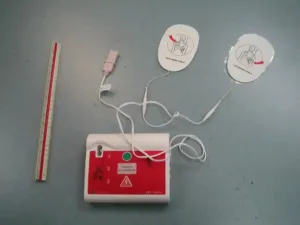Finding the right provider of CPR training in Los Angeles (LA) can be difficult because of the sheer number of them in the area. However, this provider offers the cheapest rates in the area for the highest quality training. There are different training programs for CPR available, including first aid, ACLS, and PALS training. Some programs have renewal classes available but some programs have to be retaken to become certified again.
For more details, you can visit the provider’s website, as well as instructions on how to sign up.
CPR Training programs
BLS training

There are different kinds of CPR training students can sign up for. The main program is the BLS training program, which is divided into two kinds of programs, one for the general public and the other for health care providers. CPR for the general public is a 4 hour program that tackles basic CPR training – the chain-of-survival, chest compressions, rescue breaths, and using automated external defibrillators (AEDs). There is an optional program of CPR and first aid training, that runs for 4 hours as well.
BLS for health care providers is slightly longer, and can run for 4 and half hours. This is focused on providing BLS in the health care setting, with students being able to use the entire chain-of-surival (especially the last step – post-cardiac arrest care). BLS for health care providers has a renewal program once certification expires. It runs for 4 hours.
ACLS: Advanced Cardiac Life support
ACLS is targeted mainly towards those who work in health care and deal and interact with patients on a daily basis. The ACLS goes in depth on providing cardiopulmonary resuscitation in the health care setting – primarily hospitals and clinics with complete equipment (e.g. crash carts, bag valve masks). This program runs long, 16 hours long, and has a renewal class that runs for 5 to 6 and a half hours.
PALS: Pediatric Advanced Life Support

This program is shorter than the ACLS program, running only for around 14 hours. The program is also very similar to ACLS, with the curriculum based on the BLS guidelines and the ECC – Emergency Cardiovascular Care – concept from the American Heart Association. However, as the name of the program suggests, it deals primarily with pediatric patients – neonates, infants, toddlers, young children and teenagers. There are update programs available, running from 6-8 hours depending on optional stations. PALS is tailored towards students in health care and health care providers.
More details
Class schedules can be easily arranged with this provider, especially since classes are available at various schedules through the week. You are sure to find a class that fits your schedule perfectly. All of the facilities have the latest training equipment as well. The classrooms are spacious and air-conditioned.
In order to pass your enrolled program, you need to pass the skills test and written exam (also given before the program starts for ACLS and PALS training). Once you pass, completion cards or certificates are given, valid for two years. Certificates can be renewed through a renewal class but some programs don’t have them.
